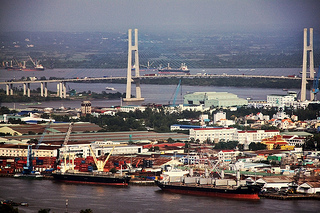 New ports are springing up to accommodate growing traffic and capacity needs, but it does not often follow that shipping lines and shippers would appreciate enough the modern terminals’ attractions to give up their old ports of call.
New ports are springing up to accommodate growing traffic and capacity needs, but it does not often follow that shipping lines and shippers would appreciate enough the modern terminals’ attractions to give up their old ports of call.
Drewry said that while governments have been encouraging and spearheading the building of new ports in response to trade growth and the arrival of bigger ships, the market has been surprisingly slow on the uptake.
“The problem is that old habits die hard in shipping, meaning that the free market approach is sometimes a painful process,” said the research group in its latest report.
In many cases, while utilization levels at many old harbors are high and new capacity is needed, “this alone does not necessarily guarantee that the new ports will be used” because of a number of resisting factors, it further noted.
For one, old ports often have better proximity to their hinterlands. For another, there may be “extensive vested interests who want to see the status quo maintained.”
In the Middle East, many governments responded to this resistance by ordering the closure of the old ports and the transfer of their volumes to the new ones, leaving the market no choice but to toe the line.
But the Middle East is “the exception rather than the rule,” as most governments and port authorities elsewhere seek to let the market choose which ports to use, banking on the fact that newer terminals offer better facilities, deeper water, and higher service levels.
In these cases, stakeholders may not go where investors, port authorities, and governments want them to go, said Drewry.
In Vietnam, new deepwater facilities have been built in the Cai Mep area, downriver from the older Ho Chi Minh City facilities which are draught restricted and suffer congestion.
The terminals at Cai Mep were constructed in the wake of Vietnam’s booming trade growth as well as on the understanding that the authorities would close down some of the Ho Chi Minh City terminals.
The closure has not happened and the river approach to Ho Chi Minh City has even been recently dredged to allow larger vessel access.
Drewry said one of the reasons for this is the vested interests of both the local municipalities in each location and from the Vietnamese Navy which gains revenue from the upriver terminals.
In addition, the slowing of volume growth, the fragmented nature of the carrier market serving Vietnam, and the need to barge containers between Ho Chi Minh City and Cai Mep at carriers’ expense have led to the further under-utilization of the Cai Mep facilities.
Similarly, in South Korea, the Busan New Port was developed in the mid-2000s on the understanding that some of the existing terminals in the old Busan port area would be closed down.
However, vested interests resisted the change and the early days of Busan New Port after it opened in 2006 saw very low utilization levels, said Drewry.
Bur over time, things have improved markedly, partly due to the closure of some of the old port facilities, but mainly because of the rapid growth in ship sizes calling at the port.
“The terminals in the old port have not been able to offer the kind of infrastructure and equipment the big ships need, and so in effect, the market has—belatedly—decided,” said Drewry.
Today, it noted that more than half of Busan’s volume is handled at the New Port, and the share is growing, and another one of the terminals (UAT) in the old port has just closed down.
“In the absence of overt central control, the market will decide which ports and terminals to use. However, experience shows though that habits (and old ports) die hard in shipping, so external encouragement for change is often required,” said Drewry.
“When governments and port authorities make promises to close capacity, they have to live up to them. Otherwise the private sector will think twice about investing. They also need to recognize that it is one thing to move a port or terminal to a more preferable site, it is another to expect forwarders to abandon their warehouses at the same time.”
Photo: jo.sau




